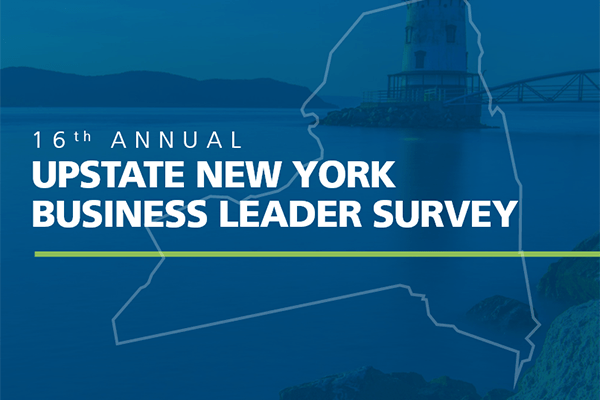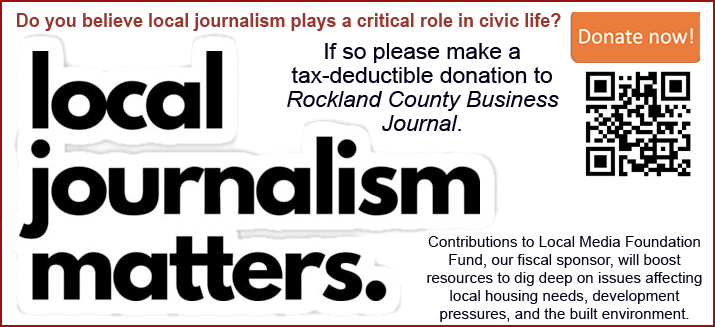|
RCBJ-Audible (Listen For Free)
|
Feeling Tentative Over Taxes, Escalating Costs and Employee Retention, Mid-Hudson Business Leaders Less Optimistic Than In Recent Years
Business Analysis
Hudson Valley’s business leaders are not in a good mood.
They are worried about the economy, heaving under the weight of taxes, and fretting about escalating healthcare and supply costs, according to findings in the 16th Upstate New York Business Leader Survey, which is compiled by UHY auditing service, Siena College Research Institute and the Hudson Valley Economic Development Corp.
Sentiment among upstate business leaders dipped to the kind of tepid enthusiasm last seen in 2007, right before the 2008 banking fiasco, when sentiment plunged to 39 percent. In 2009, the sentiment score rose to 86.4 percent and largely remained robust until a downward trend began in 2019, before the pandemic, and through 2020. But then sentiment skyrocketed in 2021 to 94.4 percent before the current and precipitous rollercoaster slide.
Asked how they are tracking growth projections, business leaders compared revenue from 2021 to 2022. Some 47 percent experienced revenue growth in 2021, while only 38 percent reported the same in 2022.
The Business Leader study is derived from interviews with business leaders from Upstate New York; it compiles information about their experience, projections, insights, and concerns.
Business industries interviewed are widespread, ranging from healthcare, technology, construction, financial, food and beverage, manufacturing, wholesale, retail, and service. Nearly 70 percent of Mid-Hudson respondents have fewer than 50 employees. Also, 78 percent of respondents run a for-profit business; the rest steer nonprofits.
Weighing in on current business conditions in New York now compared to one year ago, leaders overwhelmingly believed conditions had worsened. Some 54 percent gave a “worse” score, while roughly a quarter reported for both New York and Hudson Valley that conditions were about the same. In contrast, about a quarter of respondents said conditions in both the state and the region were better.
When the question changed to what business leaders were expecting for the year ahead in 2023, the breakdown of responses was mostly similar to the one that asked for a year-to-year comparison. Still nearly half of the respondents felt pessimistic about economic conditions moving forward.
Business leaders continuously focus on making their companies more profitable. Respondents from Mid-Hudson companies reported that nearly half their efforts would focus on cutting costs (20 percent) and increasing prices (32 percent) to stay profitable. Other strategies include growing market share and new technology.
Nevertheless, when asked where companies will concentrate their efforts for 2023, 50 percent of Mid-Hudson respondents said efforts would be focused on expanding existing markets. Trailing behind slightly, 45 percent said they’d focus on growth in existing products. Others target areas of attention were technology innovation, internal restructuring, entry in to new markets, new product lines, acquisition of new business and construction of new locations.
The study also reflects waning confidence in the economy as fewer business leaders said they would invest in fixed assets to meet growing demand or to respond to climate change, such as switching to more sustainable energy options.
Asked about what challenges them, nearly 70 percent of Mid-Hudson business leaders said the top concern are taxes, followed by healthcare and energy costs. Some 57 percent of Mid-Hudson respondents are worried about adverse conditions, 66 percent over government regulations, 62 percent fret over rising supplier costs. Tracking with these sentiments, business leaders want Albany to focus on business income tax reform, personal income tax reform, and business development incentives, to name the top three.
Responses to questions about worker supply reveal grim shortages. Some 86 percent of respondents in the Mid-Hudson said there were not enough local workers in 2022, up from 78 percent in 2021. Some 76 percent reported trouble recruiting employees, while another 27 percent were challenged to remain staff.
Among the most disturbing question was “If you had to do it all over again, considering all factors, would you locate your business in New York or somewhere else? Some 53 percent of Mid-Hudson business leaders said they’d locate somewhere else, 35 percent were still sold on New York and 11 percent said they didn’t know.
On the other hand, nearly 70 percent of Mid-Hudson respondents said they expected to be in business 10 years from today, while 11 percent said no and 19 percent weren’t sure.
















